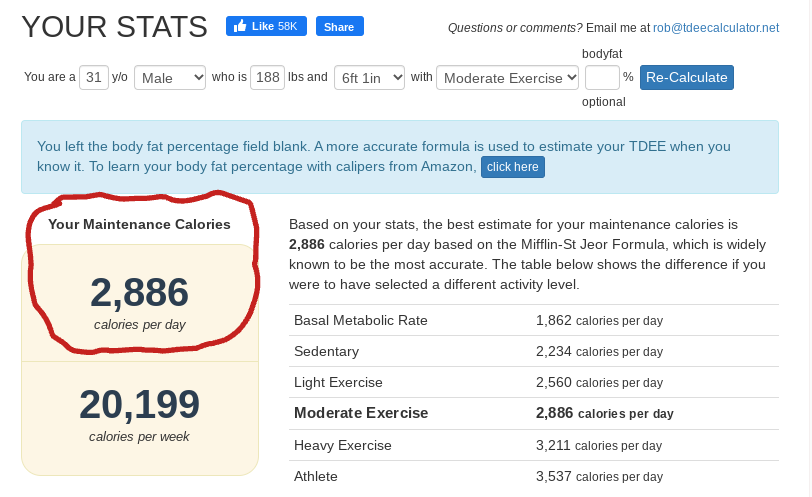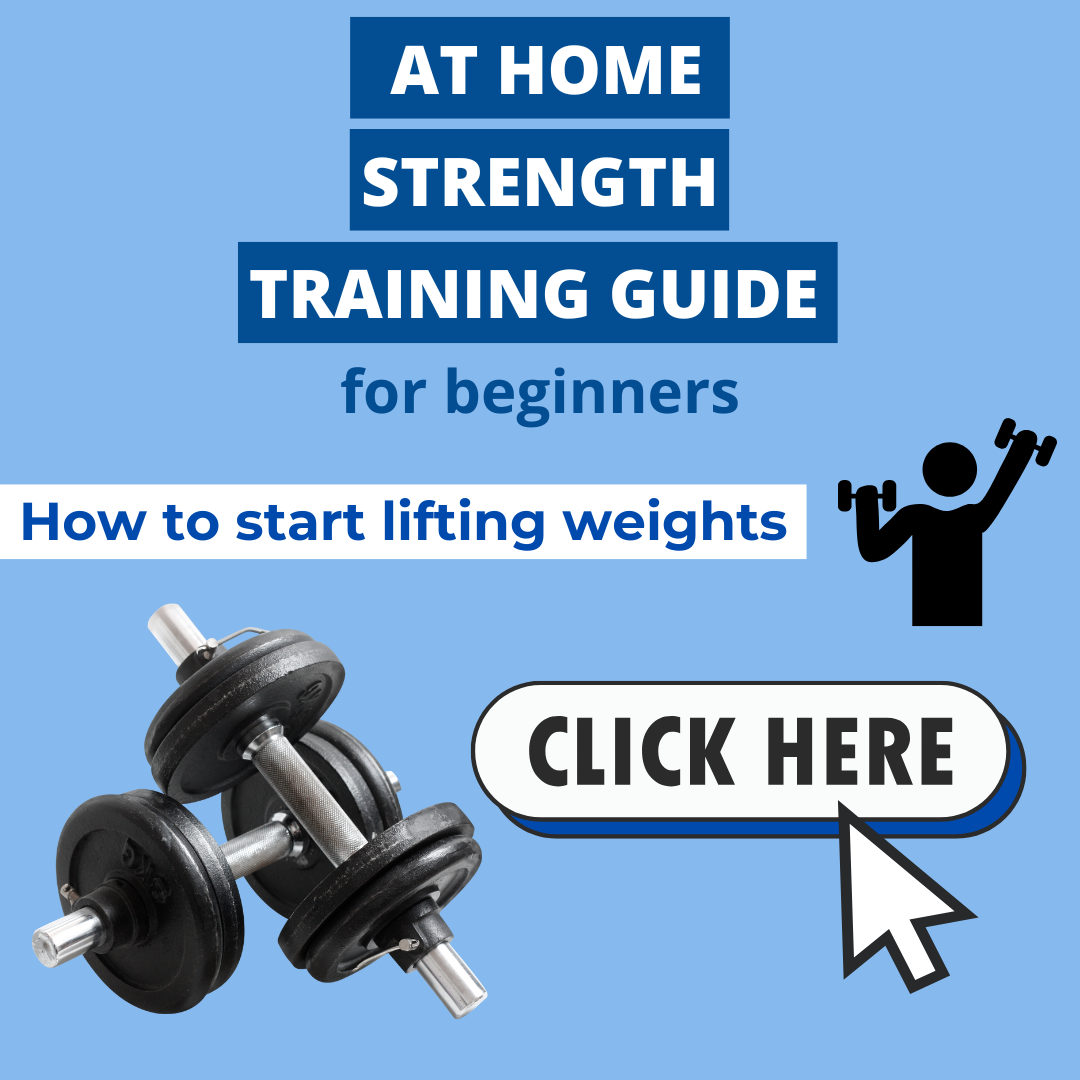How to Go From Skinny Fat to Fit

Do you want to achieve your dream physique and go from skinny fat to fit?
When you look in the mirror at yourself, it’s not that you think you’re overweight, per se.
But at the same time, you don’t really feel like you’re in that great of shape either.
You don’t have any muscle definition, there’s some extra flab around your midsection you’d like to get rid of, and overall, your body looks a little pudgy and on the softer side.
You probably have a lot of questions, like…
- Would it be better to lose fat or build muscle first?
- What should my workouts look like to fix being skinny fat?
- How should I be eating to achieve my goals?
Don’t worry.
If you make it through this entire post, you’ll come away with a detailed game plan on how to fix being skinny fat.
We’ll talk about what to do both diet and exercise-wise.
So with that said, let’s get started on your skinny fat solution 💪🏾
What is skinny fat?
Being skinny fat describes the type of body where it’s like, “Yeah, I’m not overweight but I don’t like how soft and unfit my body looks.”
How does someone become skinny fat?
The answer to that is twofold:
- Not having much muscle
- Carrying around extra body fat
Combined, that’s what gives you the rounder, not-so-in-shape appearance.
What is the main cause of skinny fat?
We’ll go into more detail below but if you consider yourself skinny fat, here are four primary reasons to explain how you might’ve developed that physique:
- Strength training isn’t a central part of your workout routine
- You’re focusing too much on cardio
- You’re overly restrictive with your diet and not eating enough
- You don’t consume enough protein
To fix being skinny fat, you want to flip your current body composition on its head–build muscle and then lose the excess body fat.
1. Strength training isn’t a staple in your workout routine
If you want to fix being skinny fat, lifting weights has to (I repeat, HAS TO) be a priority within your workout routine.
Think of it like this…
You’re at point A (skinny fat) and you need to get to point B (a leaner, fitter-looking physique with more muscle definition).
The bridge to help you get there is strength training.
Orange Theory classes and fitness boot camps don’t count as true strength training.
Neither do HIIT workouts or tying some bands around your legs and doing glute kickbacks on the StairMaster.
Strength training means getting in the gym, lifting heavy weights, and challenging yourself to get better each and every time out.
Sorry to single you out but what I’m about to say mainly applies to some of you lovely ladies out there 🙂
I know what some of you are probably thinking right now…
I don’t want to lift heavy weights, it’ll make me bulky.
That’s not true in the slightest.
If I said this a million times, it still wouldn’t be enough: Lifting heavy weights will NOT make you bulky.
It’ll actually do the opposite.
Strength training helps you get toned, slim down, and it’s what gives your body some shape.
It also won’t take lifting as frequently as Arnold Schwarzenegger back in his bodybuilding prime to see results.
3-4 times per week is what I’d recommend.
You could do a 4-day-per-week training split like this:
- Monday–lower body workout
- Tuesday–upper body workout
- Thursday–lower body workout
- Friday–upper body workout
Or a 3-day-per-week workout split like this:
- Monday–lower body
- Wednesday–upper body
- Friday–total body
Later on in this post, we’ll talk about how your workouts should look to optimize results.
2. Focusing too much on cardio
This is the counterpart to point number one.
If you’re not strength training then odds are your workouts consist of WAY TOO MUCH cardio.
Cardio without weight training is basically the ultimate blueprint to achieve a skinny fat body.
I’m not saying to never step foot on a treadmill again but you can’t change your body composition and fix being skinny fat by focusing on cardio exclusively.
Just to reiterate, you need strength training to build muscle, which is something cardio simply can’t help you do.
3. You need to eat more
Currently, you operate like this:
Low calories + too much cardio + not enough strength training = losing muscle.
You don’t fix being skinny fat by eating next to nothing and putting all your energy into cardio.
You might weigh less but you won’t have any muscle, and that’s your main problem.
Not having muscle is what’s giving your body that, “I’ve lost weight but I still look a little soft and flabby” look.
So if you want to fix being skinny fat, you need to start fueling your body for muscle growth.
4. Not eating enough protein
Adequate protein intake is essential.
Protein is the king of the macronutrients for the following reasons:
- It’s the most filling: Staying full will help you keep your calorie intake in check and lead to easier fat loss
- It enables you to build/preserve muscle: You’ll have a leaner, more defined physique when you eat your protein
- You actually boost your metabolism just by eating protein
I’ll touch more on protein a little later but a good target to shoot for is between 0.7g-1g per pound of body weight every single day.
So let’s say you weigh 200 pounds, you’d want to get somewhere between 140g–200g of protein daily.
Here’s your skinny fat solution…
To fix being skinny fat, your focus should be on building lean muscle mass, as opposed to losing weight.
…At least, at first.
What would happen if you tried to run forward and backward at the same time?
You wouldn’t make progress in either direction, right?
That’s how things work when it comes to attaining your physique goals.
You can either bulk or cut…One at a time.
So if you want to build muscle, you’d go on a bulk, which requires being in a calorie surplus (consuming more calories than you burn).
Conversely, losing fat means entering into a cutting phase and being in a calorie deficit (eating fewer calories than you burn).
Which one should you tackle first to fix being skinny fat?
To achieve the long-term appearance you want–a leaner, fitter, and more defined body–you’re going to need some muscle on your frame first, so you’ll start on a bulk.
Once you gain some muscle, you can shift your focus to losing any extra body fat and reveal the hard-earned muscle you’ve built underneath by going on a cut.
There’s an exception to every rule, however.
If you’re brand new to working out and physical activity of any kind has never really been a priority for you then you, my friend, are in luck.
You get to start at the pinnacle of achieving results because your situation allows you to build muscle and lose fat at the same time.
So before we go any further, take note of which camp you fall into.
- I’m a total beginner who’s not used to any type of physical activity.
- I’m not a total beginner, I workout sporadically and don’t follow a specific plan.
From a strength training perspective, pretty much the same rules will apply to either group.
The difference lies in how you’ll want to approach your diet.
So, let’s start there.
What your diet should look like to fix being skinny fat
1. Total beginner
Let’s start with if you’re a total beginner.
You’re a beginner if you consider yourself “average” and haven’t made much of an effort to try to get into shape.
Lifting weights, dieting, and getting physical activity might seem like a foreign language to you, and that’s 110% okay!
You should be proud of yourself for reading this article and taking the first step to change 💪🏾
I’m about to lay out exactly what you need to do from a diet perspective to fix being skinny fat.
As we talked about, normally, you’d have to choose either building muscle or losing fat.
But you’ll be able to capitalize on “newbie gains,” which allows you to build muscle and lose fat at the same time while being in a calorie deficit.
I have a more detailed post that takes you through how to determine the number of calories you should be eating.
You can read that here.
But if you just want to stay on this page, here’s an abridged version…
Step 1: Determine your maintenance calories.
This is the number of calories you’d eat if you wanted to maintain your current weight.
You can do that via this calorie calculator.
Below is what the first screen should look like from that link:

Just input all your info and it’ll spit out your maintenance calorie number (see the screenshot below).

Step 2: Take 80% of your maintenance calories to get your deficit calories.
For example, based on the screenshot above, 2,309 calories would put you in a deficit (2,886 x 0.8 = 2,309 calories).
Within those calories, you want to make sure you’re eating between 0.7g-1g per pound of body weight (if you can, try to stay on the higher end of this range).
For example, let’s say you’re currently 175 pounds, you’d aim for between 123g-175g of protein per day.
2. Not a beginner
If you’ve dabbled in strength training or working out here and there but your body just doesn’t happen to be in the shape you want it to be or look the way you want it to look, then, diet-wise, you’ll want to build muscle first by entering into a calorie surplus.
Then, you can drop into a calorie deficit for a few months to take off any body fat you don’t want.
Similar to the example above for a beginner, you first need to find your maintenance calories.
Use that same calorie calculator to get your maintenance calories.
Once you have that, add about 10% (which will help keep fat gain to a minimum) to get the number of calories that would put you in a surplus.
For example, let’s say your maintenance calories are 2,500.
You’d eat 2,750 calories to put yourself in a surplus (2,500 x 1.10 = 2,750)
In terms of protein, 0.7g-1g per pound of body weight daily is an ideal range.
How to workout to fix being skinny fat
We’ll talk about strength training first, then cardio.
There are three main things you’ll want to focus on during your strength training sessions:
- Lifting heavy with compound movements
- Applying progressive overload
- Attacking your workouts with maximum intensity and effort
Get good at compound movements
We’ve already established that strength training is a non-negotiable if you want to build muscle and fix being skinny fat.
Compound movements give you the most bang for your workout buck (they work multiple muscle groups), so make sure you’re familiar with these.
Squat and deadlift, for example, engage your entire lower body, core, and even your back.
They’re also two of the best exercises to build your glutes.
Or here’s another example…
Bench press works your chest, triceps, and shoulders.
Now, that’s not to say compound movements should make up your entire workout.
What else should be included, you ask?
I strongly encourage you to read through this beginner’s guide to strength training.
If you get through the entire thing, you’ll have everything you need to create a customized weightlifting plan.
You’ll learn about how many days a week to workout, the different types of exercises to include in your workout routine, how many reps and sets you should do–all that.
Those 2.5 pound pink dumbbells you were thinking about using for higher reps to “tone” your muscles have a special place within your workout routine.
…The trash.
You need to be lifting heavy.
That’s the only way you’ll build the muscle to fix being skinny fat.
Keep in mind that “heavy” is relative.
What’s heavy to you will be different than what’s heavy to someone else.
Apply progressive overload
This fundamental principle is at the very heart of strength training.
If you aren’t applying this principle, you won’t make the progress you need to in order to build the muscle necessary to fix being skinny fat.
It’s called progressive overload, and basically, it’s when you gradually increase the amount of weight you lift over time.
After a long day at work, something pretty special has to be going on for you to get up off of the couch and pause your Netflix marathon.
You need an incentive, like plans with a friend.
Well, progressively lifting heavier and heavier weights over time is the incentive your body needs to build muscle.
When you increase the amount of weight you lift, it places added stress on the body, and your body responds by building muscle to handle the extra stress.
Here’s how you would incorporate progressive during your workouts:
Let’s say you’re currently doing 3 sets of 8 reps on squat using 100 pounds.
Next week, you might try to go up to 105 lbs, and then the week after that, 110 pounds.
Or let’s say you want to improve your bench press.
You might start out at 150 pounds for 3 sets of 6 reps.
But next workout, you’d shoot for 7 reps.
And the week after that, 8 reps.
This won’t happen every single workout but try as best you can to get just one more rep or lift a couple more pounds than you did the last time.
Bring intensity and effort to your workouts
Intensity and effort don’t mean being drenched in sweat, jacking your heart rate up to the moon, or your lungs feeling like they’re on fire.
It doesn’t mean being in the gym for hours or doing 10 different exercises every workout.
In regards to strength training, effort and intensity means pushing yourself close to failure on your lifts.
Close to failure = those 1 to 2 reps of each working set are significantly challenging.
You’re on rep 8 of 10?
At this point, how fast you’re able to lift the weight should slow down substantially.
Rep 9, wow, it’s really getting hard.
And on rep 10, you’re pushing hard and most likely making an ugly workout face you’d be embarrassed for your gym crush to see.
That’s what lifting near failure looks like.
Great results won’t come from minimal effort or just going through the motions!
What about cardio to fix being skinny fat?
Cardio should by no means be the main focus of your workouts.
That much, you know already.
But that doesn’t mean you shouldn’t make it a part of your workout routine.
This is just my opinion but I believe that to be walking (LISS cardio).
Not only is walking the easiest form of exercise to burn calories but it also promotes recovery and is a great stress reliever.
It also won’t make you crazy hungry like high intensity workouts can (which increases the likelihood you’ll get off your calorie counting game and overeat).
Workout-impact aside, walking has some pretty amazing health benefits (reduced risk of disease, increased life expectancy, etc).
Ideally, 7,500-10,000 steps per day is a good target to aim for.
If that seems like a lot, I got you.
You’ll want to read this post for 15 unique ways to get 10,000 steps every single day.
How can you measure progress?
I would recommend weighing yourself every day but don’t rely on the scale as this be all end all for tracking progress.
Here’s why…
For one, your weight will fluctuate.
And two, let’s say you’re a total beginner, meaning you’ll be able to build muscle and lose fat at the same time.
What would that look like from a scale weight perspective?
Since a pound of muscle and a pound of fat both weigh the same, the scale wouldn’t budge but your body would look different in the mirror and through progress pictures.
You’d have more muscle and less fat so you’d appear more defined.
Which means you’ll need other ways besides the scale to accurately assess your progress.
So here’s what you do:
Take measurements
Every two weeks, take measurements of the following areas:
- Waist (narrowest part of your torso)
- Umbilicus (slightly below your belly button)
- Hip (this measurement should be taken where your glutes stick out the most)
- Thigh (measure your leg about 6 inches higher than your knee).
If these are going down (i.e. you’re losing inches but not weight), it means you’re building muscle while losing fat at the same time.
Take progress pictures
At least once a month, take progress pictures (do this from all angles).
Make sure you take them in similar lighting each month so things are consistent.
One benefit of progress pictures goes back to the fact that the scale won’t always tell you a whole lot.
Let’s say over the next few months, you gain 5 pounds of muscle and lose 3 pounds of fat (your measurements going down would be a good indicator of this).
The scale would show that you’re up 2 pounds but the scale can’t measure your body composition (i.e. how much muscle or fat you have).
So when you look in the mirror or at progress pictures, you’d notice changes in your body in terms of muscle definition, you’d look fitter, etc, even though the scale says you’re up a couple of pounds.
What about if you’re not a total beginner and you’re starting out in a calorie surplus?
The scale will inevitably go up (that’s to be expected because you’re eating more calories) but what the scale can’t really tell you is how much of that gain is muscle vs. how much of that gain is fat.
As long as you are following a strength training program, eating slightly above maintenance, and making sure to between 0.7g-1g per pound of body weight, you’ll keep fat gain to a minimum.
For now, accept a temporary increase in scale weight in the short term so that when it’s time to go on a cut, you’ll strip off the excess body fat to reveal a leaner, more defined, and fitter-looking physique.
How to fix being skinny fat FAQs
Should I bulk or cut first if I’m skinny fat?
Being skinny fat means you don’t have much muscle on your frame, which gives off a softer, pudgier look.
If you’re a total beginner who’s not used to getting much physical activity in your life, you’ll want to enter a cutting phase first (i.e. be in a calorie deficit).
Since you’re a beginner, you’ll be able to build muscle and lose fat simultaneously.
If you’re not a beginner, you’ll fix being skinny fat by starting with a bulk (i.e. being in a calorie surplus) to build muscle.
You can then go on a cut to lose any body fat you gained on your bulk.
When can I expect to go from skinny fat to fit?
It wouldn’t be responsible for me to say, “You’ll go from skinny fat to fit in exactly X amount of time.”
Everyone’s different and there are so many variables that come into play with your diet, workouts, lifestyle choices, genetics, your goals, what you even consider “fit” as opposed to someone else.
What I can tell you is that it’s going to take longer than you probably want it to.
I’m not saying that to put you down.
I just want you to have realistic expectations heading in.
I don’t want you going into this thinking, “I’ll just build muscle for a couple weeks then go on a cut for about a week and half to shed body fat and I’ll be good.”
That’s not how things work.
I mean…
What if I did give you a definitive timeline for how long it would take?
Let’s say I tell you it’ll take exactly 3 months.
What happens if you don’t have the body you want within that time frame?
You’ll just be frustrated and discouraged and you’ll feel like things aren’t working out or going fast enough.
It might even make you want to quit.
On your journey to fix being skinny fat, I encourage you to, instead of focusing on how much further you have to go, worry about applying what you’ve learned in this post and being consistent with it.
Consistency is the name of the game and you need to be in this for the long haul if you want to be successful.
If you’re consistent, results will be inevitable.
And whatever you do, just don’t quit.
As long as you just keep trying and never give up, you’ll still be in the skinny fat to fit game.

What's up?
I’m Chad, I’m happy you’re here! I’m a certified personal trainer and my goal is to help you form practical, sustainable habits that lead to lifelong fitness results. If you want to lose fat, build muscle, and live a healthier, happier life then you’re right where you need to be. 💪🏾
Free resources
⬇⬇⬇







0 Comments